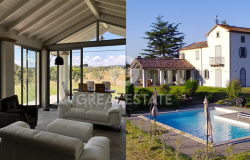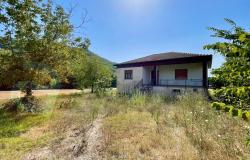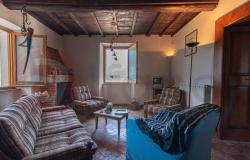When thinking of property in Italy, the ‘Big Five’ – Florence, Sienna, San Gimingnano, Perugia and Lake Trasimeno - come to mind. However, these preconceptions are starting to change, partly due to massive price increases, which have caused people to reconsider the value of life in Italy, and partly due to a more adventurous spirit which is leading prospective purchasers off the beaten track to undiscovered yet still very civilised and cultured areas, with equally beautiful landscapes and cities.
Of these, the area of Lazio to the north of Rome has to date, had only a smattering of British residents who have come to know and love the rolling plains and oak forests, three great lakes and mellow stone houses of this area.
Plenty to See and Do
The area has an extensive coast line and becomes attractive and easily accessible north of Ladispoli, right up to the Lazio/Tuscan border at Porto Ercole (Porto Ercole Property Listings), with diverse beautiful coastlines, ranging from classic sandy beaches through to the surf-friendly shale at Pescia Romana and north to the rocky coastline just across the border in Porto Ercole. The town of Tarquinia (Tarquin Property Listings) , five minutes from the Lido, is famous as the former capital of the Etruscan Empire and its wonderful museum boasts the only remaining statue of the famous flying Etruscan horses, whilst the nearby tombs are the best preserved in Italy. The town itself is equal in status, architecture and charm to San Gimingano and has a large number of medieval towers, whilst not being spoilt by an influx of a vast number of foreign tourists.
Inland, the rolling plains pass through Tuscania which plays host to many arts festivals throughout the year and which is home to artists who adore its wonderful light. The plains then give way to the volcanic lakes of Bracciano, Vico and Bolsena, the latter being the largest volcanic lake in Italy. The towns surrounding the lakes provide wonderful fish restaurants and an almost seaside atmosphere prevails, with water skiing, fishing and trips to the islands of Disentina and Martana.
The famous porcelain town of Capodimonte(Viterbo Property Listings ) lies on the shores as does the former papal residence of Montefiascone with its marvellous Duomo and beautiful vista of the lake. Nearby is the ‘dying’ town of Bagnoregio and to the south is the county town of Viterbo, which is reputed to be the finest medieval centre in Italy.
To the south is the famous Villa Lante di Bagnaia, whose house and gardens are open to the public all year round. Further east are the more mountainous regions from Mount Cimino to Mount Pizzuto and San Giovanni on the Abruzzo border at Rieti, with the opportunity to ski.
Properties for Every Budget
The property market in this area has, to date, been fuelled largely by the influx of Roman money as the lakes and the coastline are extremely popular with Romans wishing to acquire a holiday home. Luckily their tastes do not necessarily accord with British ideas and there are still many opportunities to acquire property across the spectrum and with a wide range of prices. This means you can buy a reasonably priced property in an area in which prices have only just started to accelerate, but are nowhere near as high as those places in Italy where foreign money has already boosted property values.
At the bottom end of the scale, you can still acquire small one or two-bedroom apartments in historical centres and which need very little work, other than internal decoration, from €210,000 to $symp_tax;
230,000.
Small cottages in need of full renovation in, say, one hectare (2.471 acres) of land, can be bought for as little as €240,000 with renovation costs at around €240,000 to €250,000. This would mean you could own a beautifully renovated country cottage in extensive grounds for approximately €500,000.
More substantial apartments, in places such as Vetralla and Marta, start for around €260,000, rising to €568,000 for a former nobleman’s residence in Tarquinia complete with beautiful vaulted ceiling and four bedrooms.
In the countryside there are still many large, unrestored, stone farmhouses. However, they can be difficult to prise away from Italian owners who have not yet understood the concept of selling off parcels of land with houses, as this is still a strongly productive agricultural area. Such houses are available unrenovated and can start from as little as €160,000, rising to €250,000 for large buildings of around 400 square metres.
Purchase costs are typically the same as the rest of Italy and we advise clients to reserve 11 to 12 percent of the purchase price for these.
Typically, demand has already manifested itself in the areas of Tarquinia, with its seaside and cultural attractions, as well as Marta and the areas around Lake Bolsena and Tuscania and Vetralla, with their beautiful historical centres. Many other equally attractive areas remain, as yet, undiscovered.
Easily Accessible
With a temperate climate (particularly by the coast), Roman sophistication mixing easily with a quiet agricultural pace of life, and everything very accessible using the excellent infrastructure, it is little wonder that Lazio is becoming increasingly popular with foreign buyers. In fact transport is so easy that some of our clients commute to London for three days of the week! The nearby airports of Ciampino and Fiumincino are only one hour away and the SS Aurelia and A1 motorways carve right into the heart of the area, providing superb road communications.









